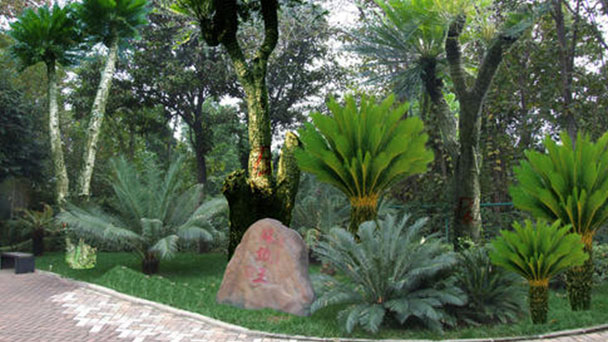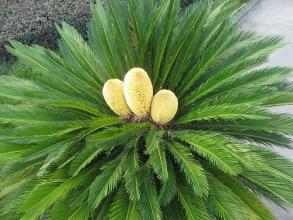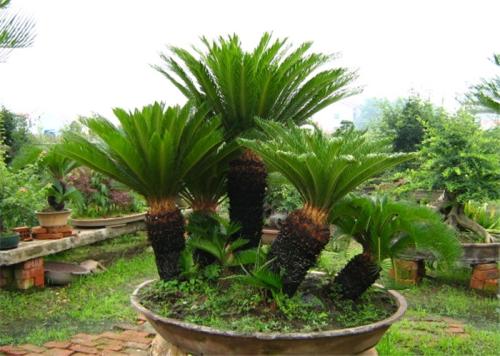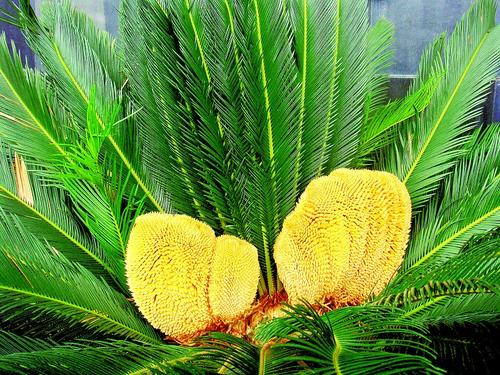Sago Palm caring tips
Written by Maggie
Sep 02 2021

Sago Palm is a spectacular leaf-watching plant and is sought after by many flower lovers. However, many people say that their Sago Palm planting is not satisfactory. So how to grow Sago Palm and how to care for it? Here are some Sago Palm caring tips.

Caring tips for Sago Palm leaf tips yellowing
The yellow tips of Sago palm leaves during planting may be caused by overwatering or lack of fertilizer, which should be taken according to different conditions. When overwatered, plants should be transplanted to sunny places for growing, which will speed up the evaporation of water. Apply potash or organic fertilizer to plants when fertilizer is scarce.
1. Watering for Sago Palm
Sago palm is often planted as a leaf-viewing plant. When Sago palm is planted, the yellow tip of its leaves may be caused by excessive watering and there is water in the soil. At this time, it is necessary to stop watering. Sago palms are best planted in a well-ventilated, light-filled place later on to speed up the evaporation of water.
If there is too much water in the soil, it is best to manually remove the excess water from the soil until the water in the Sago Palm soil has completely evaporated and the plant can return to normal. Sago palm is a water-loving plant, so allows the plant to receive plenty of water during later planting, but also prevent secondary damage caused by too much water in the soil.
2. Fertilizer for Sago Palm
The yellow tips of Sago palm leaves may also be caused by the lack of fertilizer. At this time, it is necessary to spray potash or organic fertilizer to the plants properly. It is better to dilute the fertilizer with water to reduce the concentration of fertilizer. Sago Palm does not have a high demand for fertilizers and can follow the principle of a few times or thin fertilizer application frequently.
Sago palm has a high demand for fertilizers in the growing period, so it is only necessary to fertilize the plant appropriately in this stage of planting, and it is unnecessary to fertilize the plant too much in normal planting. Sago palms grow quickly and need to be pruned regularly when planting. Use a light clip when pruning to avoid damaging the plant. Read more about how to grow and care for Sago Palm.

Caring tips for Sago Palm leaves decay
The leaf decay of Sago palm during planting can be caused by overwatering, when the plant needs to be transplanted to a well-ventilated and well-lit environment, and then stopped watering and drained of excess water from the soil. Once the Sago palm's leaves have returned to normal a little, the decaying leaves need to be cut off from the plant.
Sago palm leaves rot when planted, which can be caused by overwatering. Stop watering and transplant the plant to a well-ventilated and well-lit environment to raise it, and then remove any excess water from the soil. After Sago palm leaves return to normal slightly, the decaying leaves from the plant need to be cut off.
When pruning, it is better to cut the leaves from the root so that the new leaves can grow better. After pruning, apply potassium permanganate or albendazole solution to the wound for disinfection. Sago palm should be placed in a semi-shade and ventilated environment after pruning, and the plants should be properly watered and fertilized during planting.
Sago palm has a high demand for water. When planting, the plants can be watered according to the change of temperature. When the temperature is high, it is better to appropriately increase the number of watering and reduce the number of watering when the temperature is low. Sago Palm does not have a high demand for fertilizers and only needs to apply proper thin fertilizer to the plants during the growing period.
Sago Palm likes high temperature and does not tolerate cold. It is best to control the temperature between 20 and 28 degrees when planting, and about 5 degrees when planting in winter. It is also necessary to keep warm in winter. Sago Palm has strict requirements on soil and is suitable for growing in loose, breathable, fertile soil containing humus.

Latest Updated
- Benefits of Bugleweed - 7 Science-backed Health Benefits
- Bugleweed Dangers & Side Effects - Is It Poisonous?
- How to Plant Evergreen Trees - What You Should Know
- When to Plant Evergreens - Grow Guide for Evergreen Trees
- 12 Wonderful Evergreen Shrubs for Your Garden
- 12 Popular Evergreen Plants with Pictures for Beginners
- When And How To Prune A Lilac Bush Like a Pro
- How to Grow & Care for Lilac Vine (Hardenbergia Violacea)
- Japanese Lilac Tree (Syringa Reticulata) Care & Propagation Guide
- Shumard Oak Pros and Cons - What to Know
Popular Articles
- Winter maintenance of Antirrhinum Majus
- How to Grow Terminalia Mantaly Tree
- How to Grow and Care for Crossostephium Chinense
- How to grow Antirrhinum Majus in spring
- Peristeria Elata (Dove Orchid) Profile: Info & Care Guide
- Underwatered Snake Plant (Sansevieria Trifasciata) - Signs And How To Fix
- How to Care for Brazilian Jasmine Plant (Mandevilla Sanderi)
- How to Grow & Care for Graptopetalum Purple Delight in Summer
- Rosa Chinensis (China Rose): Plant Growing & Care Tips
- How to Care for Baby Sun Rose (Aptenia Cordifolia)